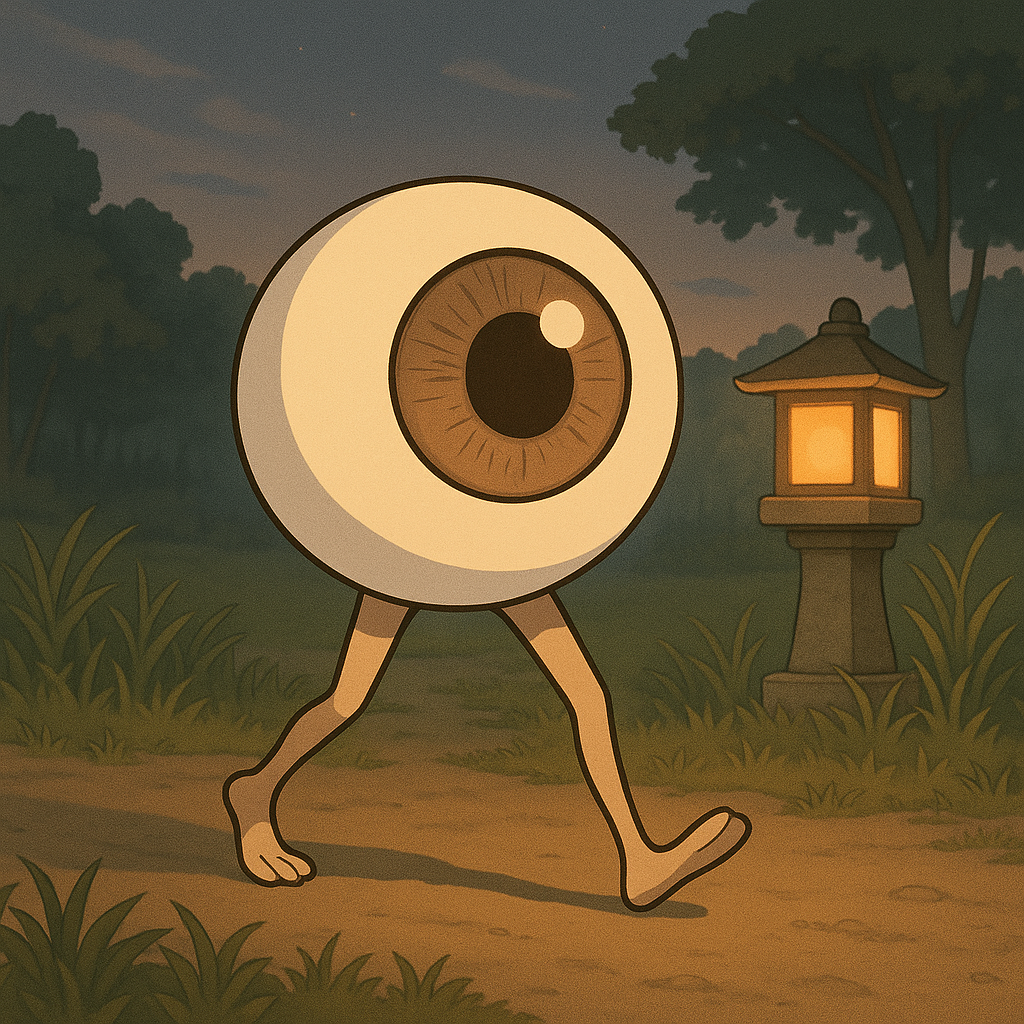見
SEE
Mnemonic
This kanji combines an eye (目) on top with human legs (儿) underneath.
Imagine it as a wandering eye from an old folktale — an eyeball with legs that never rests, constantly on the move.
Just like in strange ghost stories, this character is always looking around, always SEEing.
Example Vocabulary
-
目が見える(めがみえる) – to be able to see
Click to recall: 目 = EYE・ITEM
-
見る目(みるめ) – an eye for (fashion, recognizing talent, etc.)
-
一目見る(ひとめみる) – to take one look at
Click to recall: 一 = ONE
-
見に出かける(みにでかける) – to go out to see (a movie, event, etc.)
Click to recall: 出 = GO OUT・TAKE OUT
-
月見(つきみ) – moon viewing
Click to recall: 月 = MOON・MONTH
Ways of seeing
With 見, you encounter sight in many forms: the clarity of simply being able to see (目が見える), the deeper insight of good judgment (見る目), or the fleeting impression of a single glance (一目見る). Sometimes we go out specifically to see and enjoy something (見に出かける), or we gather to appreciate beauty together, as in the tradition of moon-viewing (月見). This kanji reminds us that seeing is never just physical—it’s also about perspective, appreciation, and understanding.
